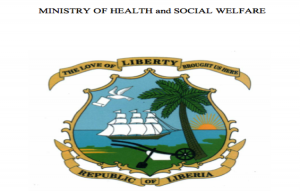Notes from the Field: Mapping Community Health Volunteers in Liberia – Findings and Challenges

The Community Health Services Division (CHSD) of Liberia’s Ministry of Health and Social Welfare is tasked with coordinating the development and implementation of all Community Health services policies, strategies, guidelines in Liberia’ public health sector. In an effort to increase access to health promotion and case management the Division has developed a number of key documents to include 1) the National Community Health Services Policy, 2) the National Community Health Services Strategic Plan, 3) Operational Guidelines for Community Health Committees (CHCs) and Community Health Development Committees (CHDCs), and 4) General Community Health Volunteers (gCHVs) training modules for Community Case Management (CCM) of Diarrhea, Malaria, and Acute Respiratory Infections (ARI). Community Case Management (CCM) is recommended as an essential package for the management of under fives in communities more than one hour walk (5km and above) from the nearest health facility by community health volunteers (CHVs).
The community health program has been plagued with challenges of weak coordination, limited functional community health structures, capacity gaps among CHVs as well as many implementing partners not adhering to the revised community health services policy and strategy when implementing community health activities.
As a first step in assessing the status of implementation of the program and plans in order to address the earlier identified challenges, the CHSD conducted a mapping of CHVs and Community structures. It was expected that the outcome of this exercise was to inform the division, partners and County Health Teams to properly plan and implement community driven, cost effective and achievable community health programs in Liberia.
As this was the first experience in trying to map CHVs and measure population coverage of community health services in Liberia, the mapping exercise encountered a number of limitations pertaining to the findings and constraints faced during the fieldwork as listed below:
- The time allotted for this survey was insufficient
- Incomplete documentation of some CHVs due to inability of survey team to meet them or unavailability of CHVs during survey period
- The survey data did not link names of communities enumerated with a designated general community health volunteer (gCHV) thus limiting the ability to find out a proper distribution of gCHVs with respect to the number of communities and population covered by a given gCHV.
- Information collected on training obtained by CHV did not differentiate between technical training and orientation or awareness raising sessions.
- Non-inclusion of data on Trained Traditional Midwivess for a whole county (Margibi) due to late arrival of the data
- Availability of limited numbers PDA’s and inability of some supervisors to use them delayed the photographing of some gCHVs.
- Logistic issues such as delay in transferring funds, vehicle breakdown, and bad road conditions affected the survey process.
Based on the survey findings the following recommendations were made for consideration by the CHSD:
- There is a need to develop a conceptual approach on gCHV catchment communities
- Establish and periodically update a database of CHV at all levels
- Improve the competence and functionality of gCHVs and TTMs
- Revitalize the requisite community structures to drive delivery of Community health services
It is important to note that Liberia has since developed a Community Health Roadmap that has incorporated these recommendations and designed interventions to address them.
This post was submitted by Ochiawunma Ibe, Senior Community Health Services Advisor, USAID Liberia
Check out Liberia’s CHW activities on the 1mCHW Campaign Operations Room.

Comments are closed